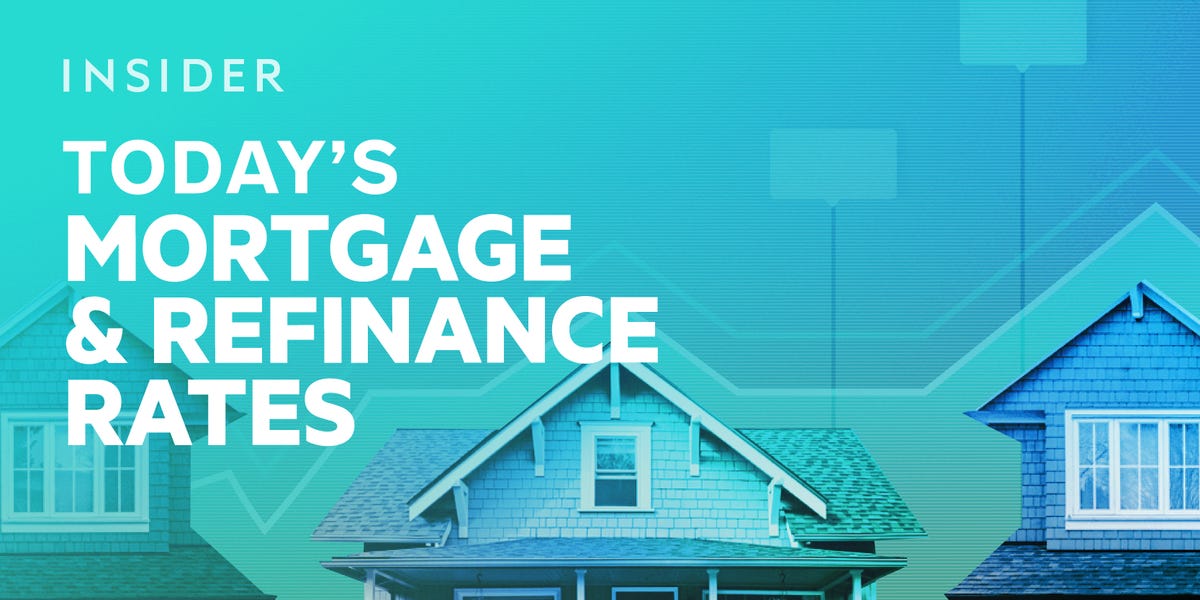Our experts answer readers’ home-buying questions and write unbiased product reviews (here’s how we assess mortgages). In some cases, we receive a commission from our partners; however, our opinions are our own.
Despite the latest Consumer Price Index data coming in a bit hot according to Thursday’s report, mortgage rates have been holding steady this week. Average 30-year mortgage rates remained in a tight 6.3%-to-6.45% range, only up a little bit from the previous week.
The hotter-than-expected CPI numbers, which showed that inflation rose 3.4% year over year in December, led many to wonder if this would cause the Federal Reserve to push back its timeline for rate cuts in 2024.
But investors are currently pricing in an almost 80% likelihood that the Fed will make its first cut to the federal funds rate at its meeting in March, up from 64% a week ago, according to the CME FedWatch Tool. If that happens, we could see mortgage rates inch down further.
But Fed officials may also decide that they want to wait a bit longer before making any moves, in which case mortgage rates may generally stay near their current levels for at least the next few months. We’ll likely get a better idea of when to expect rate cuts at the Fed’s next meeting at the end of January.
Most experts believe mortgage rates will go down in 2024, but the timing will depend a lot on the path of inflation and when the Fed starts lowering the federal funds rate.
Mortgage Rates Today
| Mortgage type | Average rate today |
|
|
|
|
|
|
|
|
|
|
|
|
|
|
|
|
|
|
|
|
|
Mortgage Refinance Rates Today
| Mortgage type | Average rate today |
|
|
|
|
|
|
|
|
|
|
|
|
|
|
|
|
|
|
|
|
|
Mortgage Calculator
Use our free mortgage calculator to see how today’s mortgage rates will affect your monthly and long-term payments.
Mortgage Calculator
$1,161
Your estimated monthly payment
- Paying a 25% higher down payment would save you $8,916.08 on interest charges
- Lowering the interest rate by 1% would save you $51,562.03
- Paying an additional $500 each month would reduce the loan length by 146 months
By plugging in different term lengths and interest rates, you’ll see how your monthly payment could change.
Mortgage Rate Projection for 2024
Mortgage rates increased dramatically for most of 2023, though they started trending back down in the final months of the year. As the economy continues to normalize in 2024, rates should come down even further.
In the last 12 months, the Consumer Price Index rose by 3.4%, a significant slowdown compared to when it peaked at 9.1% in 2022. This is good news for mortgage rates — as inflation slows and the Federal Reserve is able to start cutting the federal funds rate, mortgage rates are expected to trend down as well.
For homeowners looking to leverage their home’s value to cover a big purchase — such as a home renovation — a home equity line of credit (HELOC) may be a good option while we wait for mortgage rates to ease. Check out some of the best HELOC lenders to start your search for the right loan for you.
A HELOC is a line of credit that lets you borrow against the equity in your home. It works similarly to a credit card in that you borrow what you need rather than getting the full amount you’re borrowing in a lump sum. It also lets you tap into the money you have in your home without replacing your entire mortgage, like you’d do with a cash-out refinance.
Current HELOC rates are relatively low compared to other loan options, including credit cards and personal loans.
When Will House Prices Come Down?
We aren’t likely to see home prices drop anytime soon thanks to extremely limited supply. In fact, they’ll likely rise this year.
Fannie Mae researchers expect prices to increase 6.7% in 2023 and 2.8% in 2024, while the Mortgage Bankers Association expects a 5.7% increase in 2023 and a 4.1% increase in 2024.
Sky high mortgage rates pushed many hopeful buyers out of the market last year, slowing homebuying demand and keeping price growth somewhat moderate. But rates are expected to drop this year, which will likely push home prices even higher. The current supply of homes is also historically low, which only exacerbates the problem.
Fixed-Rate vs. Adjustable-Rate Mortgage Pros and Cons
Fixed-rate mortgages lock in your rate for the entire life of your loan. Adjustable-rate mortgages lock in your rate for the first few years, then your rate goes up or down periodically.
So how do you choose between a fixed-rate vs. adjustable-rate mortgage?
ARMs typically start with lower rates than fixed-rate mortgages, but ARM rates can go up once your initial introductory period is over. If you plan on moving or refinancing before the rate adjusts, an ARM could be a good deal. But keep in mind that a change in circumstances could prevent you from doing these things, so it’s a good idea to think about whether your budget could handle a higher monthly payment.
Fixed-rate mortgage are a good choice for borrowers who want stability, since your monthly principal and interest payments won’t change throughout the life of the loan (though your mortgage payment could increase if your taxes or insurance go up).
But in exchange for this stability, you’ll take on a higher rate. This might seem like a bad deal right now, but if rates increase further down the road, you might be glad to have a rate locked in. And if rates trend down, you may be able to refinance to snag a lower rate
How Does an Adjustable-Rate Mortgage Work?
Adjustable-rate mortgages start with an introductory period where your rate will remain fixed for a certain period of time. Once that period is up, it will begin to adjust periodically — typically once per year or once every six months.
How much your rate will change depends on the index that the ARM uses and the margin set by the lender. Lenders choose the index that their ARMs use, and this rate can trend up or down depending on current market conditions.
The margin is the amount of interest a lender charges on top of the index. You should shop around with multiple lenders to see which one offers the lowest margin.
ARMs also come with limits on how much they can change and how high they can go. For example, an ARM might be limited to a 2% increase or decrease every time it adjusts, with a maximum rate of 8%.







